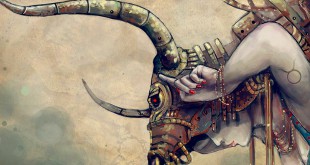 Musk-Ox — The muskox (Ovibos moschatus) is an arctic mammal of the Bovidae family, noted for its thick coat and for the strong odor emitted by males, from which its name derives.
Musk-Ox — The muskox (Ovibos moschatus) is an arctic mammal of the Bovidae family, noted for its thick coat and for the strong odor emitted by males, from which its name derives.
As members of the subfamily Caprinae of the family Bovidae, muskoxen are more closely related to sheep and goats than to oxen, but are in their own genus, Ovibos. Both sexes have long curved horns. Muskoxen are usually around 2.5 m (8.2 ft) long and 1.4 m (4.6) high at the shoulder. Adults usually weigh at least 200 kg (440 lb) and can exceed 400 kg (880 lb). Their coat, a mix of black, gray, and brown, includes long guard hairs that reach almost to the ground. Rare “white muskox” have been spotted in the Queen Maud Gulf Migratory Bird Sanctuary Muskox wool, or qiviut (an Inuit word), is highly prized for its softness, length, and insulative value. Prices for yarn range between $50 and $100 per ounce.
During the summer, muskoxen live in wet areas, such as river valleys, moving to higher elevations in the winter to avoid deep snow. They graze on grasses, reeds, sedges, and other ground plants, digging through snow in the winter to reach their food.
Muskoxen are social and live in herds, usually of around 10–20 animals, but sometimes over 400. Winter herds consist of adults of both sexes as well as young animals. During the mating season, which peaks in mid-August, males compete for dominance, and one dominant bull drives other adult males out of the group. Non-breeding males will often form male only herds of 3-10 or wander the tundra alone. During this period all males are extremely aggressive. Bulls will even charge birds if they are close by.
Muskoxen are native to the Arctic areas of Canada, Greenland, and Alaska. The Alaska population was wiped out in the late nineteenth or early twentieth century, but muskoxen have since been reintroduced to Alaska. The United States Fish & Wildlife introduced muskox onto the Nunivak Island in 1935 as a means for sustenance living.The species has also been reintroduced from Banks Island to northern Europe, including Sweden, Estonia, the Dovre region of Norway, and Russia and from Ellesmere island to Eastern Canada, in the province of Quebec. Muskoxen were close to extinction at one point, but have recovered after being protected from hunting. The world population is estimated at between 80,000 and 125,000, with an estimated 68,788 living on Banks Island.
 Kids Portal For Parents India Kids Network
Kids Portal For Parents India Kids Network






